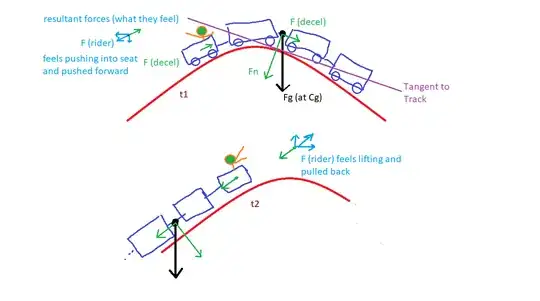I am wondering about this question since I asked myself: why do people feel more weightless in the rear car of a roller-coaster than in the front car?
To feel the effect of weightlessness, you must accelerate at the acceleration of the gravity (around 9.8m/s^2). Thus, you do not feel that effect in the front car but more likely in the rear car. But all the cars are connected together, and one individual car cannot accelerate faster or go faster because they will get pulled/pushed from the other cars.
I am stuck right now to get the answer. If all cars must go at the same acceleration or same speed at different points on the tracks, why does the rear-car feel more weightless? To have that feeling you must accelerate near the gravitational acceleration ... it doesn't make sense!
I have put the air friction, the frictional forces outside of this since I am guessing their force shouldn't be taken in consideration in that kind of situation.
